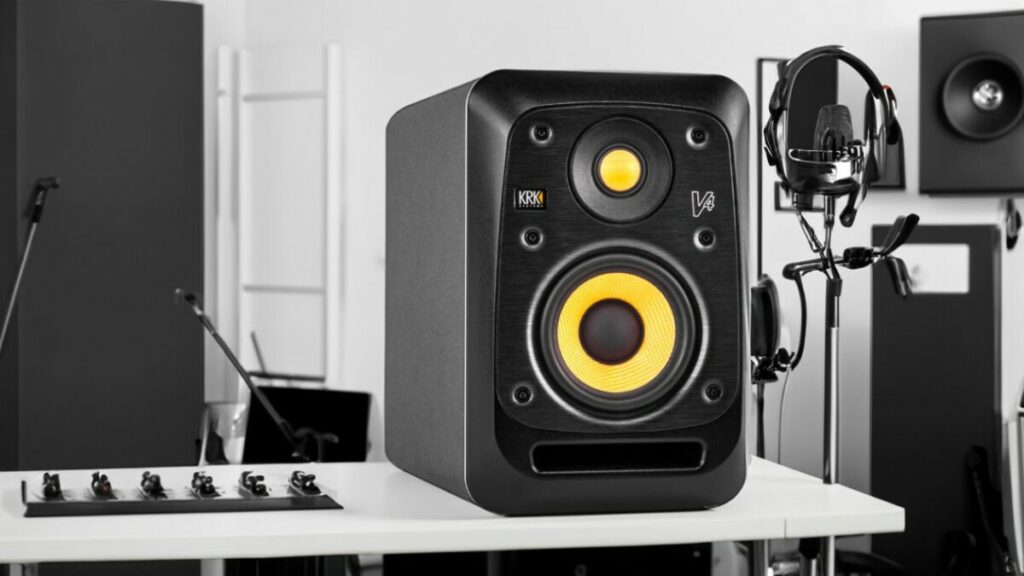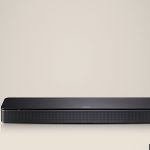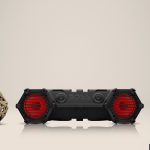Just like a maestro steering a symphony, you’re the one pulling the strings in your studio.
Don’t sell your tracks short by not paying attention to the height of your studio monitors.
Slap them in the wrong spot and you’re gonna warp the sound, messing with your mix in a big way.
It’s all about knowing the why and the how of the perfect monitor height and dodging the usual pitfalls when setting it up.
Let’s get down to brass tacks and talk about how you can crank your sound quality up to eleven by just tweaking the height of your studio monitor.
What’s The Ideal Height For Studio Monitors?
You have to position your studio monitors in a way that puts the tweeters (the things taking care of the high frequencies) on the same level with your ears when you’re chilling in your usual listening spot. This setup makes sure the sound from the monitors shoots straight into your ears without any unwanted echoes or bending, delivering a clean and precise stereo image.
Getting that height alignment nailed down right is the secret sauce to nailing your mixes and getting a detailed and accurate vibe from your audio. If you’re dealing with monitors that are too high or low, it could throw off your frequencies, either pumping them up or dampening them, which can tweak the way your sound comes across.
Importance of Studio Monitor Height Placement
Ever wondered why the height of your studio monitors is such a big deal? It boils down to something called acoustic influence, which is all about how sounds play around in your studio space. Have your monitors too high or too low, and you’re inviting the sound waves to bounce off all sorts of crazy surfaces, causing this pesky thing called destructive interference. It’s a total buzzkill, basically scrambling your audio output.
And don’t even get me started on monitor placement – it’s a game changer. So, here’s the pro tip: Your monitors need to be at ear level. Why? Because it gives the sound a straight shot to your ears without bouncing around off desks or walls and messing with the original sound. It’s like getting a VIP pass to an unaltered, pure audio experience.
Every little detail matters in a studio setup, so don’t think of adjusting your monitors to the right height as a comfort thing. Nah, it’s all about surgical precision and, at the end of the day, the final quality of your sound. So, let’s give your sound the respect it deserves, shall we?
The Science Behind Optimal Monitor Height
Getting a grip on the science behind finding the perfect height for your monitor can seriously level up your viewing experience. It’s all about diving into the nitty-gritty of Acoustic Reflections and Monitor Angles. Trust me, it’s not rocket science, more like a fun experiment.
Here’s the lowdown:
Acoustic Reflections
- Imagine sound waves as a bunch of tiny bouncy balls, bouncing around your room off different surfaces. This is what causes reflections. If your monitors are set too high or too low, these little sound bouncers can mess with the sound you’re hearing.
- By tweaking the height of your monitors, you’re basically giving these sound waves less room to bounce around crazily. The result? You get clearer sound and less of that audio blur.
Monitor Angles
- The way you position your monitor can make or break the sound quality.
- The sweet spot? Your monitors should be at ear level, kind of angled towards you to form a perfect equilateral triangle between you and the monitors.
Once you’ve got this down, you’re all set for an amazing, immersive viewing experience. Remember, it’s all about that balance between sounding hip and professional. Keep it interesting, mix it up and you’re golden.
Practical Guidelines for Setting Monitor Height
If you’re keen on getting that top-tier visual and audio experience from your monitor, setting the height just right can be a game-changer. The type of support stand you choose for your monitor matters, but make sure it’s steady and you can easily tweak the height.
The science behind adjusting your monitor’s height isn’t rocket science. You want your monitors to hit that sweet spot at ear level, creating an equal distance triangle with where you sit. That’s the secret sauce for precise sound vibes. Remember to angle your monitor a tad bit downwards so it’s pointing straight at your ears.
Let’s talk about distance. You and your monitors need some space, just enough for the sound waves to develop fully before they get to you. But hey, these are just pointers, not law. Feel free to play around to find what jives with you. Remember, it’s all about personalizing your space to suit you best.
Common Mistakes in Adjusting Studio Monitor Height
Even when you’re giving it your all, you might still be messing up when it comes to tweaking the height of your studio gear.
These blunders basically come in two flavors:
The Fallout from Monitor Tilting
- When you angle your monitors the wrong way, you’re rolling the dice with phase cancellation. This can mess with your low frequencies and give you a false idea of what’s happening in your mix. You’re basically inviting distortion and a disastrous mix balance to the party.
- Cranking the tilt too much can also blur your stereo image, making it a total headache to get your panning decisions on point.
The Pitfalls of Height Adjustment
- If your monitors are either too high or too low, you’re cruising for a bruising with frequency response issues. Your mix could sound way too boomy or way too thin.
- The height of your monitors also messes with where you’re listening from, which can distort your perception of your mix’s depth and stereo field.
Does the Distance from the Wall Affect the Height of Studio Monitors?
Believe it or not, how far your studio monitors sit from the wall can totally influence how they sound. Position them just right and you’ll score the best sound quality and imaging.
Now, if you’re placing them too close, you might end up with a bass response that’s super boomy. On the flip side, put them too far out, and you might be dealing with sound that’s a tad bit on the weak side.
So, what’s the fix? Play around with different distances and see what rocks your world. It’s all about honing in on that sweet spot for your studio’s sound balance.
Setting up studio monitors is not just about getting the height right; it’s also about the purpose you’re using them for and the gear that hooks up with them. For instance, say you’re into listening to vinyl using studio monitors. Now, there are certain things you’ve got to keep in mind to ensure your audio quality is top-notch.
Likewise, if you’re one of those using studio monitors for home stereo setups, the recipe for nailing the perfect sound in your homey vibes could be a little different.
While discussing positioning, you might also be in two minds about whether you should get studio monitor stands. Good call, because these stands play a key role in hitting that sweet spot of ideal height and tilt for an A+ sound delivery.
Tips for Maximizing Sound Quality Through Monitor Height Adjustment
Remember, when you’re fiddling with your gear, getting the right height could be the game-changer in taking your sound from just okay to absolutely awesome. Pay close attention to the monitor angle – it’s super important! The sweet spot is usually a 30-degree tilt from where your ears are. This way, the sound hits your ears just right, reducing any distortion and making everything sound crystal clear.
And hey, don’t overlook the role your room plays in this. Ever noticed how sounds bounce off reflective surfaces? Yeah, that can messwith your sound quality big time. So, investing time in setting up a well-thought-out studio space can do wonders for your audio. Try to keep your monitors a safe distance from the walls to avoid any booming bass issues.
Sound Artist
I’m a Sound Artist creating immersive sonic experiences. I turn everyday objects into music, turning the mundane into something marvellous!








